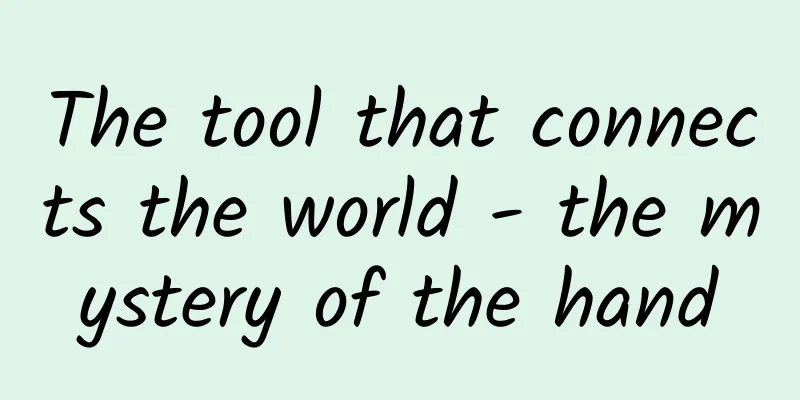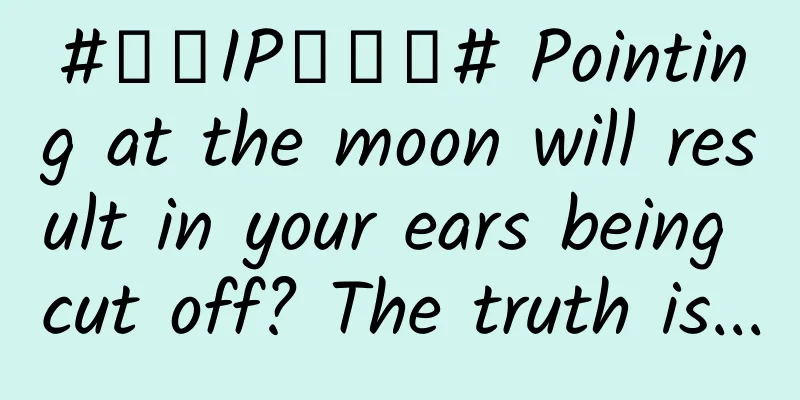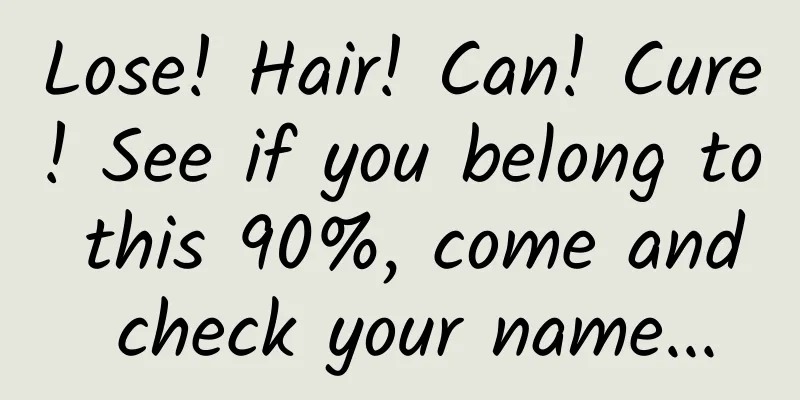The tool that connects the world - the mystery of the hand

|
Leviathan Press: A healthy human hand has 10 fingers and 28 knuckles, arranged in a regular pattern. The structure is very simple, but it can meet the basic needs of counting and calculation - the former is about the memory of the past, and the latter is about the touch of the future. When I was a student, I always heard such an argument: the reason why humans are different from other animals is that humans can use tools. In a sense, the hand is the first tool that our thoughts can connect to the world. Before humans stored memories in 0s and 1s, we used another kind of digital device—keeping knowledge on the surfaces of our fingers and palms. Kensy Cooperrider walks us through the millennia of digital memory and the techniques used by Buddhist monks, Latin linguists, and Renaissance musicians to remember the easily forgettable. Photo of the Mogao Grottoes paper paintings from the fourth volume of Aurel Stein's Serindia: Detailed Report of Explorations in Central Asia and Westernmost China (1921). © dsr.nii.ac.jp No one knows who painted this picture. It was probably painted by an 8th-century monk, perhaps a follower of a Buddhist mystical sect that traveled the Silk Road; however, the painting was long forgotten in the Mogao Caves. When the caves were discovered in 1900, the painting was found among a collection of religious manuscripts, very old and well preserved. The painting has a timeless theme: a pair of human hands. The painting shows only a pair of severed hands, standing on a lotus, palms facing the viewer. Ten powerful and graceful fingers are annotated with Chinese characters: the bottom layer of characters, at the fingertips, names each finger; above them, a second layer of characters for the five elements: air, wind, fire, water, and earth; and a final layer of characters, floating above like a kite string, lists ten virtues, including zen, power, benevolence, wisdom, and tolerance. The image shows a mnemonic system, a way to project knowledge onto the hands so that it can be studied, remembered, and kept in one’s pocket. At about the same time this mnemonic system was emerging, halfway around the world in a monastery in Northumberland, another monk was developing a different body of knowledge about hand arithmetic. We know him by his name: Bede. In 725 AD, he published a treatise called De temporum ratione, which not only discussed shadows, moonlight, and the summer solstice, but also proposed a method for determining when Easter fell in any given year. This may sound like a trivial operation, but for Christians at the time, it would be hard to find a more important and troubling problem. "Finger arithmetic" ("Loquela digitorum") according to the Bede system, from a manuscript from the early 9th century. © bibliotheca-laureshamensis-digital.de To determine the date of Easter—the first Sunday after the full moon on the vernal equinox in the Northern Hemisphere—it was necessary to calculate the laws of the planets, and Bede used his hands as a chart to plot these laws. He observed that there were fourteen joints in the five fingers of one hand, plus five nails—a total of 19 markings. This number follows the metonic cycle: the number of years it takes for the moon to be in the same phase on the same day of the year. By adding the knuckles of both hands and subtracting the number of nails, you get 28 markings: about the number of years for a complete solar cycle. A 9th century manuscript from the monastery of Sankt Emmeram depicting the 19-year Metonic cycle as a wheel-shaped calculation. © Bavarian State Library This way, Bede noted, the hands could “easily grasp the periods of two planets.” Beyond this basic setup, he left out any details, not even illustrations. (The technique, Bede wrote, “would be better communicated by the words of living men than by the constant writing of a stylus.”) But his system—known as computus digitorum, or simply “the calculation”—found an appreciative audience. It was widely disseminated and refined, and would serve as a cornerstone of Christian learning for centuries to come. These two systems are perhaps the earliest examples of hand mnemonics, and only their rough outlines have survived to us. Yet it’s easy to recognize their appeal. They seem to spring from an impulse that transcends time and place, a drive that is uniquely human in its roots: the drive to find props to help us reason and remember. “When ideas fill the mind,” the psychologist Barbara Tversky once wrote, “the mind throws them into the world.” With the hand mnemonics, we in a sense project these thoughts into the external world, but we also keep them within reach. Woodcut illustration from Anianus' Computus cum commento (c. 1492), a refinement of Bede's system of calculation. © collections.nlm.nih.gov In the beginning, the hand was just a hand - we can imagine this stage. It was a common organ, but one with many uses: a tool for grasping, holding, throwing, lifting. Then, at some point, millions of years later, it took on other responsibilities. It was no longer just a tool for physical labor, but also a tool for mental labor. As a species, our systems of understanding, belief, and mythology have become increasingly complex and cognitively challenging. So we began to project these systems into the external world: we cut notches into bones to count, track, and record, we tied strings of knots, painted cave walls, and arranged rocks to correspond to celestial bodies. These early mental efforts were of course done with the hands, but they later became more than just accessories to the labor process. Starting about 1,200 years ago, we began using our hands themselves as a portable repository of knowledge for whatever might easily slip through our mental fingertips. The grooves and grooves of our palms and fingers were invisibly engraved with all sorts of information—creeds, dates, names, and sounds. The hand became versatile in a new way: it became an all-purpose memory machine. The art of memory is well known, but the role of the hand in these techniques is often overlooked. In the 20th century, starting with the pioneering work of Frances Yates (1899-1981, British historian), Western scholars began to piece together a rich tradition of memory techniques that originated in ancient times and later took root in Europe. The most famous of these is the "memory palace." Using this technique, skilled users memorize large collections of facts by placing them in familiar locations, or “loci”: rooms in a building or along a familiar route. (To make these locations more memorable, users often add a quirky image to each location, the more obtrusive the better.) It’s a bit odd that so few people mention the manual mnemonics when they talk about the memory palace. Both techniques are powerful and well-proven. Both are adaptable and can accommodate any type of information the user wants to remember. Both work on a similar principle, anchoring the information to be remembered in a familiar location. There are indeed important differences between the two traditions. Memory palaces exist only in the imagination, while hand mnemonics exist half in the head and half in the flesh. Another difference is their intended use. Memory palaces are essentially individual, tailored to the particularities of one’s experience and personal associations, and used for private purposes; they are largely an individual domain. In contrast, hand mnemonics are a community domain, a tool for collective understanding. They provide a way to fix and transmit a shared system of knowledge. They certainly serve individual purposes, such as the Mogao hand mnemonics for contemplation and Bede’s calculation rules for calculation. But they also have powerful social functions in teaching, ritual, and communication. Hand-colored woodcut titled The Hand as the Mirror of Salvation, 1466. © nga.gov The richness of this neglected tradition can be seen in its prevalence. In medieval Europe, Christian mnemonics of the hand were extremely common. Several mnemonics, similar to the one found at Mogao Caves, attached key teachings to various locations on the hand. A German woodcut from 1466 titled "The Hand as the Mirror of Salvation" assigned different spiritual stages to each finger: (recognition of) God's will to the thumb; examination to the index finger; repentance to the middle finger; confession to the ring finger; and satisfaction to the little finger. In 1491, a religious treatise, also from Germany, offered readers a catalogue of “finger positions”: the book’s 100 meditations were assigned to each finger. Another illustration in the same treatise filled both hands with miniature portraits of key Christian figures: apostles and saints peered out from the twelve knuckles of four fingers; Mary and Jesus shared a thumb. Ink drawing from Stephan Fridolin’s Schatzbehalter der wahren Reichtumer des Heils (The True Treasure of Salvation), published in Nuremberg by Anton Koberger in 1491. The hands in this image are inscribed with numbers corresponding to the meditations in the book, forming a table of contents. © art.thewalters.org Ink drawing from Stefan Fridolin's The True Treasures of Salvation, published by Anton Koberg in Nuremberg in 1491. Here the hands are painted with busts of apostles, saints, Mary and Christ. © art.thewalters.org At different times and places, the hand has also become a mnemonic map for sound. The so-called "Guido hand" is named after the 11th-century Italian music teacher and scholar Guido d'Arezzo, who invented the technique of using different knuckles to represent different pitches in a scale as a way to help students "learn with the greatest ease and accuracy a melody they had not yet heard." Curiously, the Guido Hand was never explicitly described in Guido's own writings, but history still attributes it to him. In the centuries since his death, the Guido Hand has been an important part of music instruction. One scholar has called it a "basic conceptual device" for all musicians of the time. 16th century diagram from an anonymous manuscript showing music being written on a hand, a method attributed to Guido d'Alezzo. © wikimedia Manuscript illustration of "Guido's Hands", circa 1274. "Note that the solfeggio sequence 'ut-re-mi-fa-sol-la' appears both in the closed circle and on the hand." © wikimedia Perhaps inspired by Guido, other European thinkers developed systems for learning the sounds of language. In the 15th century, the writer John Holt developed a hand-mnemonic technique for memorizing Latin declensions, and in 1511, the German scholar Thomas Murner proposed a hand-mnemonic for parsing German phonetics. However, these authors were centuries behind their Chinese counterparts, where hand mnemonics had long been used in phonology. As early as the 13th century, Chinese scholars projected syllable diagrams (often called “rhyme diagrams”) onto the palms and fingers. A 16th-century rhyme diagram had 32 key sounds drawn on the fingers, 16 for each hand. 'Rhyme Chart', from a 19th century reprint of Sima Guang's Qieyun Zhizhang Tu (original edition c. 1050). © nla.gov.au In Europe, many mnemonics were derived from the Bede system, and they were used to tell time by hand. One striking example comes from a 1582 volume on practical astronomy by the French polymath Jean Tabourot, best known for his treatises on dance, published under the pseudonym Thoinot Arbeau, a scrambled version of his name. The astronomy book has only 61 pages, but 11 of them contain drawings of hands—in various configurations and filled with different kinds of data. One of them is a mnemonic for the notoriously difficult aspect of the almanac: the alternation of long and short months. It shows a left hand with the thumb, middle finger, and pinky extended and the index and ring fingers tucked in. The system begins with March, anchored on the extended thumb (31 days), then moves right to the bent index finger for April (30 days), then to the extended middle finger for May (31 days), and so on. It repeats twice on all five fingers, ending with one month on the thumb (31 days) and two months on the index finger (28 days). Illustration from Practical Astronomy by Duoino Alpó, 1582, showing the use of the "manual almanac". © gallica.bnf.fr The most complex and time-consuming of all the hand mnemonics is not tailored for time, sound, or any kind of information; it was proposed by Girolamo Marafioti of Calabria in a treatise on the art of memory published in 1602. The system consists of a mnemonic map of 92 hand positions, 23 on each side of the hand, each with a different geometric symbol: a crescent, a wine glass, a circle with an angle, a lemon. To use the system, you simply assign each position an item to remember. As Marafioti suggests, people could use it to remember a group of people sorted by status, age, or other characteristics. The system compresses the hallmarks of the memory palace—its use of familiar topography and unique imagery, and its customizability—into a pocket-sized “portable” device. Hand diagram from Girolamo Marafioti's 17th-century mnemonic treatise De Arte Reminiscentiae, showing the use of loci. © www.digitale-sammlungen.de If we look around the world, we find examples of hand mnemonics that include: Jewish hand calendars similar to Bede's calculations; hand mnemonics used by sailors to record the phases of the moon and the tides; an elaborate system of hand notes for remembering important events in Dutch history; a mnemonic alphabet from 1579, in which different hand shapes represent different letters; and a variety of Chinese medicine mnemonics. And to be truly comprehensive, we should also explore the fringes of this tradition: in some cases, people "carve" information into their hands in their minds, but their primary function does not seem to be as a memory aid. For example, alphabets used to communicate with the deaf rely on hand points; practitioners of palmistry and Kabbalah study hand maps; there are systems that transform the hand into a sundial; and the hand can serve as a "body map" for divination and exorcism. As an example of the last use, a Chinese illustration from 1152 invites readers to press different parts of the hand (called "mu," or eyes) to ward off different kinds of evil. A Hebrew mnemonic calendar used to record Jewish festivals and prayer cycles. The years recorded from left to right are: 1690, 1691, 1804. © bl.uk A guide from 1815 by H. Somerhausen to important periods in Dutch history. © www.digitale-sammlungen.de Illustration from Duoino Alpó's Practical Astronomy, 1582, showing how to transform a hand into a sundial. © gallica.bnf.fr As we wander through this rich tradition, questions arise. What is it about the hand that makes it such a popular mnemonic device in the first place? A big part of the answer undoubtedly involves its portability. The hand is always, well, at hand. Another part of the answer is our familiarity with it. Although we often say we know something like the back of one's hand when we know it intimately, the palm of one's hand is no more uncharted territory than the back of one's hand. A further advantage comes from the fact that hand mnemonics provide both visual and kinesthetic access to memory: they are seen and felt at the same time. The final part of the answer is that the human hand can be analyzed and interpreted in different ways. In one sense, we have the perfect container for the ten virtues; in another, we have the perfect framework for the twelve apostles, thirty-two syllables, or a hundred meditations. But why did hand mnemonics emerge at that point in time? What gap did they fill? The examples presented here suggest that the tradition flourished at a time when written and oral cultures coexisted, when some people—the scholarly elite—were developing complex systems of knowledge in monasteries and universities, while others—the wider public—were trying to master these systems and use them in their daily lives. Hand mnemonics may have been perfectly positioned to move between these two cultures. They bridged the voice and the pen, providing a living text for the trained imagination. The difficulty here is that it is difficult to say with certainty when hand mnemonics first emerged. Based on the earliest surviving examples, we can assume that they began to develop around 1,200 years ago. But similar techniques may have been in use for centuries or more. The reason no earlier evidence has survived is probably because hand mnemonics were so widely used, so commonplace, that no one thought to mention them. Bede, remember, did not bother to explain his famous system or the accompanying diagrams. Neither did Guido. It’s also hard to pinpoint when and why hand mnemonics faded from the scene—if they ever did. Many people still memorize long and short moons by projecting them onto their knuckles, an updated version of the Tabloid system. Echoing Bede, Japanese students sometimes use hand calendars to determine what day of the week a given date is. In the United States, residents of Michigan, West Virginia, Alaska, and elsewhere use “hand maps,” which are hand shapes that resemble the topography of a particular area. The “right-hand rule” for hand mnemonics is still taught in physics classes, and hand mnemonics are particularly popular in medicine, where new hand mnemonics are constantly being developed. Several groups of doctors have recently proposed different hand mnemonic systems for memorizing the expected values of certain diagnostic tests, as well as the anatomy of the brachial plexus and the lungs. We increasingly hide our thoughts in virtual digital worlds, but sometimes we still turn to that primitive "pointer" repository in our pockets. By Kensy Cooperrider Translated by Kushan Proofreading/Rabbit's Light Footsteps Original text/publicdomainreview.org/essay/handy-mnemonics This article is based on the Creative Commons License (BY-NC) and is published by Kushan on Leviathan The article only reflects the author's views and does not necessarily represent the position of Leviathan |
<<: Using the ground as a reference, my accuracy improved again!
>>: Why does "couple cancer" occur? The "killer" behind it is ignored by many people
Recommend
All 300+ hot spots in 2017 are here. Don’t tell me you can’t keep up with the hot spots!丨
It's the end of the year again. Advertising an...
What are the common misunderstandings about Baidu’s paid ranking?
For those who are new to bidding, they often fall...
Changan Weilai changes its name to Avita Technology and joins hands with Huawei and CATL to build high-end smart cars
On May 20, Changan Automobile announced that its ...
Imitation of Meituan city selection interface
Source code introduction: MeiTuanLocateCity imita...
Have you ever seen a railway that runs through the air and in a cave?
Vocabulary Logistics transportation completion an...
Learn these 7 tips to draw perfect icons
Hello everyone, I am Brian. Icons are the most ba...
The landscape after the dividend: a detailed analysis of China's mobile phone market in 2017
This article contains the key content of GfK'...
Super Fans Pass | Is Super Fans really useful? Here are four early adopter cases, and the data speaks for itself!
1. Added advertising types, you can choose market...
Is it expensive to produce the Gannan Building Materials mini program? Gannan Building Materials Mini Program Production Cost List
There is no fixed price for the production of the...
Is it reliable to determine parent-child relationship based on blood type? Why is it so difficult to determine parent-child relationship based on blood type?
Audit expert: Jin Tao Chief Physician of Hematolo...
How to conduct a marketing campaign that can be implemented?
Today I will share two issues that I have gradual...
The core of brand planning and promotion!
The names, logos, standard colors and standard ch...
Flink in-depth deployment of advanced development and case practice
Introduction to Flink in-depth deployment of adva...
Soft skills you don't know: How programmers can avoid detours in the workplace
Before we talk about "soft skills", let...
Do you think it's cool to open the bottle cap with your teeth? "Open" has "teeth" logic!
Friends gathering, family dinner, late night barb...









